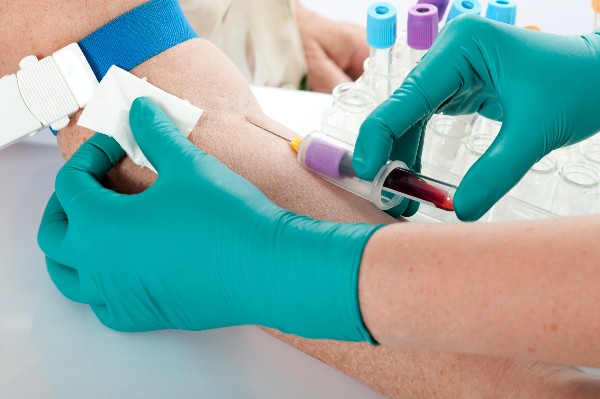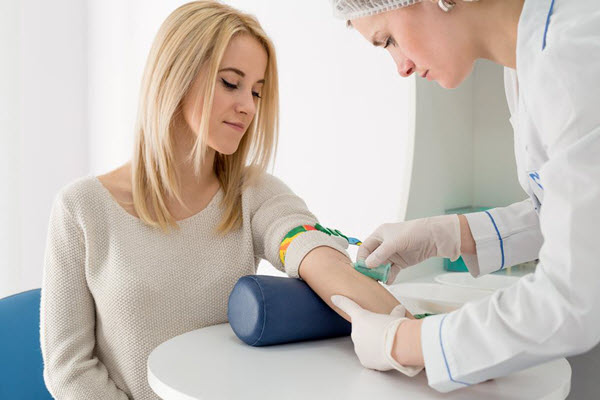If you are passionate about helping others, have great people skills, and if you’re not skittish at the sight of blood and other bodily fluids, then you should totally consider becoming a phlebotomist.
Although this occupation is an entry-level job, bear in mind that it is still a rewarding medical career. Interestingly, studies have shown that this field can increase by 15% by 2020. With that said, the healthcare industry will not only need additional blood specialists but primarily more exceptional phlebotomists.
Now, although great, you shouldn’t just make a decision without understanding everything about the job. To help you out, here are the top phlebotomist pros and cons you need to know.
The Vocational Rewards

Phlebotomy technicians’ main task is to collect blood, sputum, feces, urine, and other bodily fluids for analysis. Essentially though, blood is the primary specimen that these practitioners collect.
The collected blood can be inspected for medical disorders, such as heart disease, cancer, and diabetes. Aside from that, they draw plasma donation to help those patients experiencing blood clotting and auto-immune problems.
With a job that tirelessly serves patients every day, let’s look at a number of rewards this vocation provides:
Solid Career
To kick off your career, the education and training of a phlebotomist take about 4 to 8 months. In any case, they vary between schools or training facilities. Luckily, for those with full schedules but are keen on switching careers, there are now credible institutions offering phlebotomy online classes.
For those seeking jobs right away, you will be delighted to hear that not all areas require a certification. Nevertheless, it is highly advisable to undergo training and get certified. Take note that licensed phlebotomy technicians will be certainly hired and accorded higher salaries than a non-certified one.
Once you become a qualified blood specialist, you are now ready to break into the stable healthcare industry. Remember that no matter where your location is, there will always be individuals requiring medical attention.
Moreover, with our current technology, various health disorders can be diagnosed with a simple blood sample and analysis. Precisely the logic behind the occupation which provides a solid career.
Extensive Employment Opportunities
Working in a hospital setting is the initial job that these practitioners might favor. Yet, there are tremendous opportunities available for phlebotomists that are not within the hospital setting.
Other than drawing blood from the hospitals, phlebotomy technicians are also needed in nursing homes, emergency clinics, diagnostics laboratories, blood banks, outpatient facilities, and doctor’s offices.
Furthermore, while the position of a phlebotomist is gratifying, there are huge possibilities for advance training and deeper career specialization. Pursuing this path may lead to reinforced salary, employment status, and work condition comparable to those secured by practitioners working in a general function.
In undertaking advanced education or training, one could become a therapeutic phlebotomist, a supervisor for a team of blood specialists or you may also use your education as a stepping stone for medical school. Whatever avenue you take, they will surely result to improved career and pay scale.
Amenable Working Hours

With lots of employment opportunities available, you can rely on amenable working hours. There are individuals who prefer to adhere to the same set of hours every week while there are those who love a diverse and flexible schedule.
If you are the type who enjoys the same routine, then a job at a private practice or a doctor’s office is right up your alley. These businesses typically operate during normal business hours. On the other hand, if you opt for shifting hours which is not the regular 9 to 5 job, then working in a busy hospital is your best choice.
Alternatively, you can set your own schedule while working as an independent contractor. With the option of amenable working hours, you can savor family or other life celebrations without having to waste a day off or vacation leave.
Stable Earnings
On the average, the annual salary of a phlebotomy technician is around $33,000. A few sometimes reach up to $40,000 yearly. Add more experience and it may possibly stretch to $49,000. Additionally, some reputable institutions may even provide health and retirement benefits.
With the role in such great demand, facilities and institutions are willing to compensate well for exceptionally skilled practitioners. Further training may later be provided which can lead to increase in salary.
Cultivate Different Personalities
One of the incredible perks of this noble vocation is being able to supervise a wide range of clients — from unwell pediatric cases to ailing geriatric patients. Similarly, encountering people needing medical care is not only limited to serving hospitals and facilities. You can likewise do this by devoting time to volunteer work.
Engaging in this kind of endeavor also permits you to manage several types of patients with different personalities. In doing this, you’ll be able to enhance your people skills which can comfort patients quickly and effectively.
Aside from handling various patients, participating in charitable work also provides you remarkable opportunities to give back to communities and travel to innumerable locations.
The Occupational Perils

While working as a phlebotomist can be immensely rewarding, it doesn’t come without any risk. Below are some of the cons of the job:
Infection Transmission
Healthcare institutions meticulously follow an infection control protocol. Regardless of this, a potential violation of the procedure is inevitable which can result in occupational transmission of infection or disease.
Infectious diseases can be transmitted through several ways, such as directly or indirectly coming in contact with an infected patient and body fluids.
Common diseases which can be acquired through these methods are Influenza, Conjunctivitis, Tuberculosis, Chickenpox, Upper Respiratory Infection, Measles, Hepatitis B or C, Herpes, Scabies, Lice, etc
Thus, it is crucial that phlebotomists strictly practice infection control protocols like handwashing, receiving a vaccination, and promptly isolating suspected or known infectious patients.
Incidence of Patient Injury
While research shows that there is a small number of injury resulting from the process of drawing blood, risks may still occur during the procedure. When said problems arise, it can potentially be dangerous, life-altering, and some might lead to death.
In addition to those troubling situations, said issues will result in lawsuits against the healthcare institution, the supervisor, plus the phlebotomy technician who carried out the procedure. Unfortunately, lawsuits such as this often favor the injured patient.
Common issues resulting in patient injury include:
- Incorrectly identifying a patient for blood collection which can contribute to improper medication
- Incompatible blood transfusion
- Inability to choose most appropriate puncture site
- Inadequately using the proper equipment.
Take note that the worst consequence of incompatible blood transfusion is patient death.
Workplace Burnout

Working in a hospital, emergency departments or trauma centers will definitely heighten your stress levels. Aside from the fast-paced environment, working long irregular hours may eventually take its toll.
Those who go through stress may experience heightened heart rate, blood pressure, and respiratory rate. If not addressed accordingly, the individual may suffer from headaches, sleep problems, stomach/colon disorders, low concentration, depression, and gradually professional burnout.
Practitioners who are seriously stressed at work may suddenly resent the job and ultimately leave their work.
See Also: How to Prevent Nurse Burnout and Achieve Work-Life Balance
Sharps Fatalities
Sharps fatalities are common occurrences in phlebotomy. Injuries may come from hypodermic needles, blood collection needles, and needles used for intravenous catheter insertion.
As a consequence of this injury, dangerous and life-threatening viruses and infections may be transmitted such as Human Immunodeficiency Virus (HIV), Hepatitis B or C, Malaria, and Syphilis.
Based on research, the fatalities may occur during the use of the sharp, before disposal or during needle recapping. It is critical then that a phlebotomist must know how to protect themselves and the proper protocol after an injury.
Worksite Violence
As mentioned earlier, phlebotomists work with different kinds of clients. By this, it may include unpleasant, rude, uncooperative, violent, and frustrated patients. Oftentimes, it is not only the individuals needing medical attention who are difficult but also their families, relatives, and even their visitors.
Dealing with tough patients and situations may often lead to violent acts such as physical assault, threatening, and verbal abuse.
Moreover, various factors that may lead to worksite violence include handling patients who are under the influence of drug or alcohol, long line for service, overcrowded waiting areas, lack of staff, and individuals carrying deadly weapons.



















